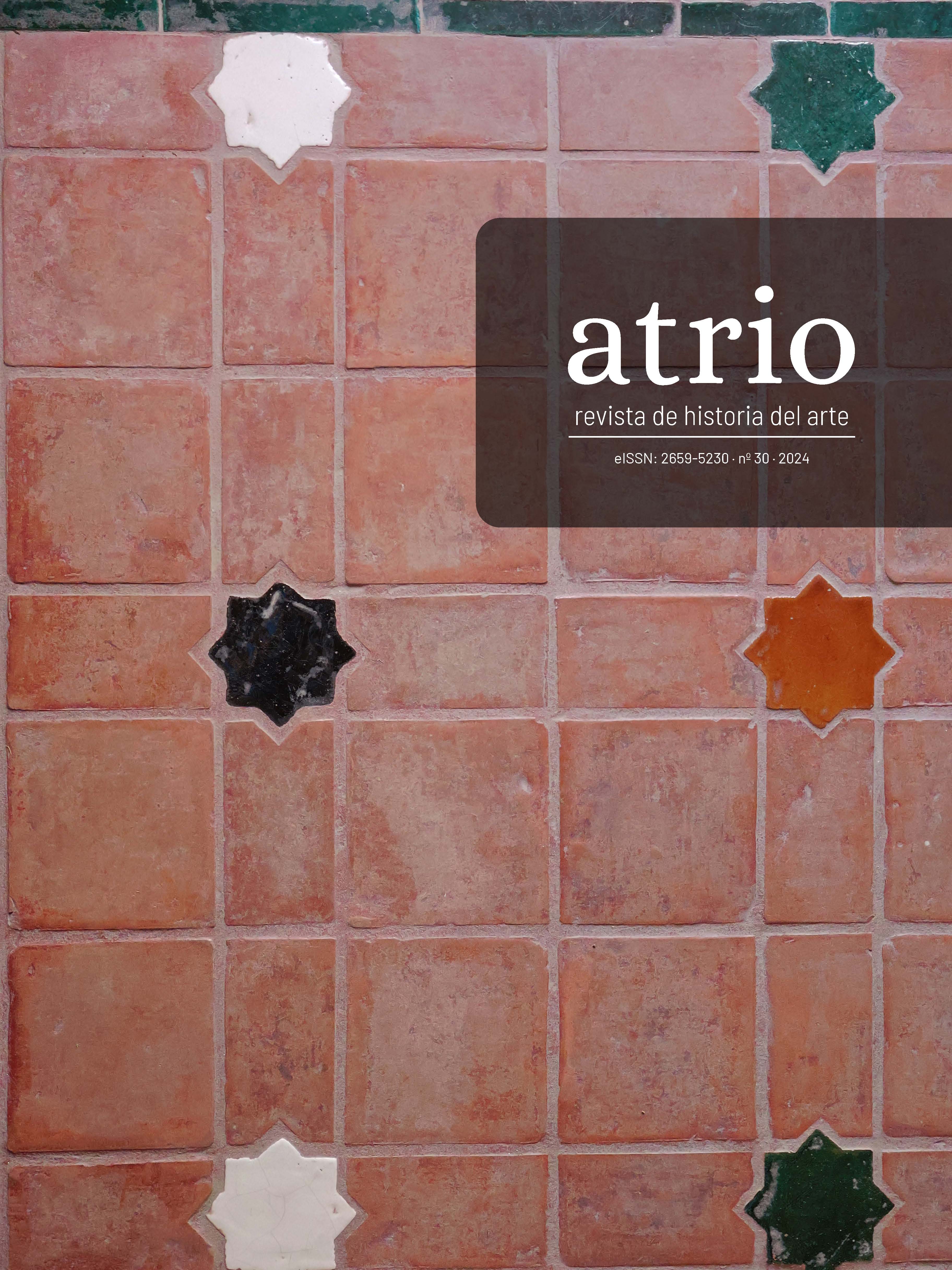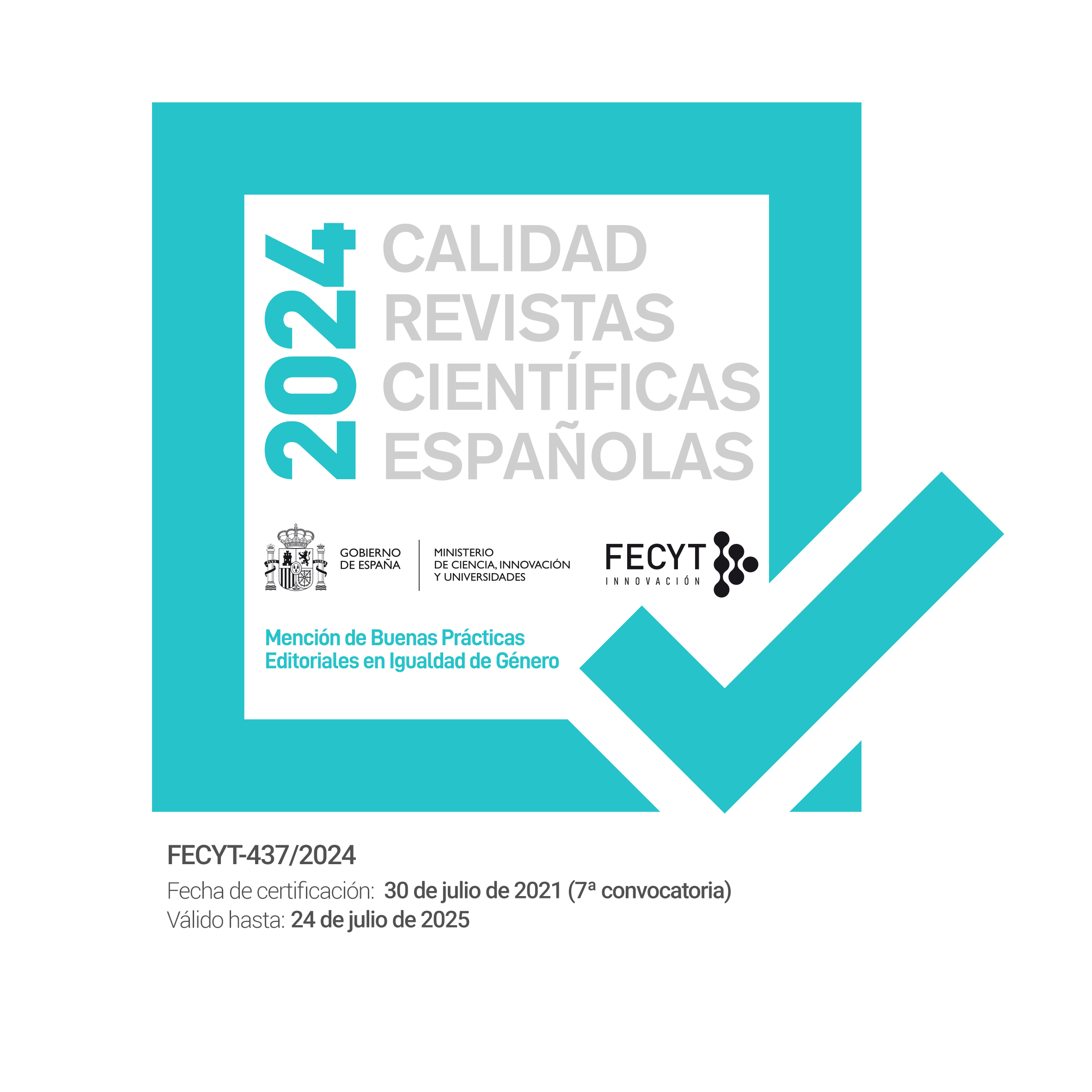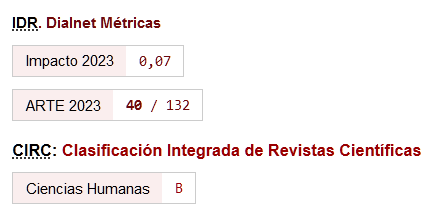Propaganda and Manipulation through Painting. Antoine-Jean Gros and Napoleon’s Campaign to Syria.
DOI:
https://doi.org/10.46661/atrio.10629Keywords:
Antoine-Jean Gros, Napoleon, Syria, Jaffa, Orientalism, Historical PaintingAbstract
During his expedition to Egypt, Napoleon conducted a military campaign in Syria which, like the one in Egypt, was a failure. During the siege of Jaffa and Acre the French army suffered a plague and some of Napoleon’s decisions were criticized and revealed by the English press. In a complicated political context, Napoleon turned to art, and especially painting, to silence rumours about his attitude and to appear as a protector of the soldiers before he was crowned Emperor. Antoine-Jean Gros’ paintings of the campaign in Syria reflect the propaganda and manipulation of what really happened and lay the foundations for an orientalism, while historical painting takes on a new and different dimension.
Downloads
References
Baldassarre, Antonio. “The Politics of Images. Considerations on French Nineteenth-Century Orientalist Art (ca. 1800-ca. 1880) as a paradigm of Narration and Translation.” En Narrated Communities narrates Realities. Narration as Cognitive Processing and Cultural Practice, editado por Hermann Blume, Christoph Leitgeb, y Michael Rössner, 185-247. Leiden: Brill, 2015. https://doi.org/10.1163/9789004184121_014.
Bell, David. Men on Horseback. The power of Charisma in the Age of Revolution. Nueva York: Farrar, 2020.
Boime, Albert. Art in an Age of Bonapartism. 1800-1810. Chicago: University of Chicago Press, 1990.
Burke, Peter. The Fabrication of Louis XIV. New Haven: Yale University Press, 1992.
Chevè, Dominique. “Représenter l’Orient épidémique? Regards croises d’artistes francais (XVIII et XIX siècles): une approche anthropologique.” Cahiers de la Mediterranee, no. 96 (2018): 271-288. https://doi.org/10.4000/cdlm.10975.
Coller, Ian. Arab France. Islam and the Making of Modern Europe 1798-1831. Los Angeles: University California Press, 2010. https://doi.org/10.1525/california/9780520260641.001.0001.
Dwyer, Philip. Napoleon. The Path to Power. Londres: Bloomsbury Publishing, 2008.
Dwyer, Philip. “Napoleon and the Foundation of the Empire.” The Historical Journal, no. 53 (2010): 339-
, https://doi.org/10.1017/S0018246X1000004X.
Dwyer, Philip. Citizen Emperor. Napoleon in Power. New Haven: Yale University Press, 2013.
Dwyer, Philip. “Citizen Emperor. Political Ritual, Popular Sovereignty and the Coronation of Napoleon I.” History, no. 100 (2015): 40-47, https://doi.org/10.1111/1468-229X.12089.
Forrest, Alan. Conscripts and Deserters: the Army and French Society during the Revolution and the Empire. Oxford: Oxford University Press, 1989.
Friedlaender, Walter. “Napoleon as Roi Thaumaturge.” Journal of the Warburg and Courtauld Institutes, no. 4, (1941): 139-141. https://doi.org/10.2307/750411.
Grigsby, Darcy. “Rumor, Contagion and Colonization in Gros’s Plague-Stricken of Jaffa (1804).” Representations, no. 51 (1995): 1-46. https://doi.org/10.2307/2928645.
Grigsby, Darcy. Painting Empire in Post-Revolutionary France. New Haven: Yale University Press, 2002.
Humbert, Jean-Marcel, Michael Pantazzi, y Christiane Ziegler. Egyptomania: Egypt in Western Art, 1730-1930. Paris: Réunion des Musées Nationaux, 1994.
Johnson, Dorothy. “Corporality and communication: The gestural revolution of Diderot, David, and the Oath of the Horatii.” The Art Bulletin, no. 71(1) (1989): 93-113. https://doi.org/10.1080/00043079.1989.10788480.
Kelly, Catherine. “Medicine and the Egyptian Campaign: The Development of the Military Medical Officer during the Napoleonic Wars c. 1798-1801.” Canadian Journal of Health History, no. 27 (2010): 321-342. https://doi.org/10.3138/cbmh.27.2.321.
Knels, Eva. Der Salon und die Pariser Kunstszene unter Napoleon I. Kunstpolitik, künstlerische Strategien, internationale Resonanzen. Hildesheim: Olms, 2019.
O’Brian, David. After the Revolution: Antoine-Jean Gros, Painting and Propaganda under Napoleon. University Park: Pennsylvania State University Press, 2006.
O’Brian, David. “Another lieu de mémoire? Napoleonic Painting, the Museum and French Memory.” En War Memories in Revolutionary Europe, editado por Alan Forrest y Etienne Francois, 291-316. Londres: Palgrave, 2012.
O’Rourke, Stephanie. “The Sediments of History in Napoleonic France.” Word & Image, no. 37 (2021): 6-20. https://doi.org/10.1080/02666286.2020.1866797.
Piussi, Anna. “The Orient of Paris: The Vanishing of Egypt from Early Nineteenth-Century Paris Salons (1800-1827).” En La France et l’Égypte à l’époque des vice-rois, 1805-1882, editado por Daniel Panzaz y Andre Raymond, 40-52. Cairo: IFAO, 2002.
Porterfield, Todd. The Allure of Empire. Princeton: Princeton University Press, 1998.
Siegfried, Susan. “Visualizing History in Eighteenth-Century France.” Representations, no. 145 (2019): 80-106. https://doi.org/10.1525/rep.2019.145.1.80.
Tóth, Ferenc. “Un Hongrois en Ègypte Avant Napoleón. La misión secrète du Baron de Tott.” Revue Historique des armées, no. 270 (2013): 14-22. https://doi.org/10.3917/rha.270.0014.
Van Eck, Caroline, John Versluys, Miguel, y Pieter Keurs. “The Biography of Cultures: style, Objects and agency. Proposal for an interdisciplinary approach.” Cahiers de l’Ècole du Louvre, no. 7 (2015): 2-22. https://doi.org/10.4000/cel.275.
Warner, Nicholas. “Picturing Power: the depiction of leadership in Art.” Leadership and the Humanities, no. 2 (2014): 4-26. https://doi.org/10.4337/lath.2014.01.01.
Published
How to Cite
Issue
Section
License
Copyright (c) 2024 Antonio Pérez Largacha

This work is licensed under a Creative Commons Attribution-NonCommercial-ShareAlike 4.0 International License.
Los autores/as que publican en Atrio. Revista de historia del arte están de acuerdo con los siguientes términos:
- Los autores/as conservan los derechos de autor y garantizan a la revista el derecho de ser la primera publicación del trabajo al igual que licenciado bajo una licencia de Creative Commons Attribution-NonCommercial-ShareAlike 4.0 International License que permite a otros compartir el trabajo con un reconocimiento de la autoría de este y la publicación inicial en esta revista.
- El autor/a o cedente del material que se entrega para su publicación autoriza a la revista para que publique, sin obligación alguna (económica o de otra naturaleza), el contenido del referido manual tanto en formato papel, como en digital, así como en cualquier otro medio. Esta cesión de uso del material entregado comprende todos los derechos necesarios para la publicación del material en la revista. Quedan garantizados, simultáneamente, los derechos morales del autor
- El autor/a o cedente es plenamente consciente y está de acuerdo con que todos o cualesquiera de los contenidos proporcionados, formarán una obra cuyo uso se cede a la revista para su publicación total o parcial.
- El autor/a o cedente garantiza ser el titular de los derechos de Propiedad Intelectual sobre los contenidos proporcionados, es decir, sobre el propio texto e imágenes/fotografías/obras fotográficas que se incorporan en su artículo.
- El autor/a o cedente asegura y garantiza: (i) que todo el material enviado a la revista cumple con las disposiciones legales aplicables; (ii) que la utilización de cualquier material protegido por derechos de autor y derechos personales en la concepción del material se encuentra regularizada; (iii) que obtuvo las licencias de derechos, permisos y autorizaciones necesarias para la ejecución del material, inclusive los derechos de imagen, si fueran aplicables; y (iv) que el material no viola derechos de terceros, incluyendo, sin limitarse a estos, los derechos de autor y derechos de las personas.
- El autor/a o cedente, exime a la revista de toda y cualquier responsabilidad con relación a la violación de derechos de autor, comprometiéndose a emplear todos sus esfuerzos para auxiliar a la revista en la defensa de cualquier acusación, medidas extrajudiciales y/o judiciales. Asimismo, asume el abono a la revista de cualquier cantidad o indemnización que esta tenga que abonar a terceros por el incumplimiento de estas obligaciones, ya sea por decisión judicial, arbitral y/o administrativa.













